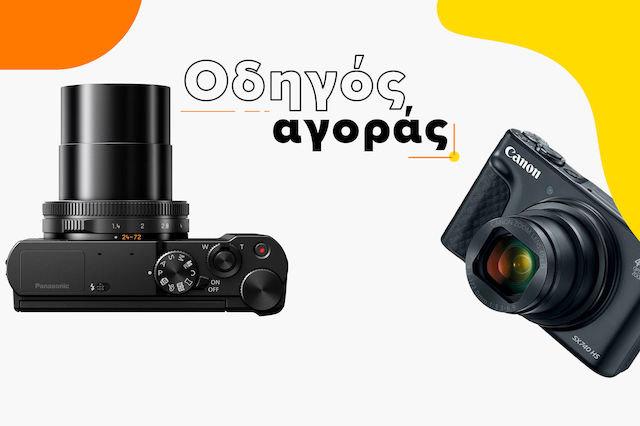Buying Guide for DSLR Cameras
DSLR (Digital Single-Lens Reflex) cameras are ideal for those who demand the best possible image quality and performance, as well as complete creative control. The key feature of any DSLR camera is the ability to change lenses to suit each shot - from telephoto lenses for distant subjects to Macro lenses for close-ups.
There is a wide range of DSLR cameras available on the market right now, so if you're trying to decide which one is best for you, this guide will help you reach your decision.
Whether you're thinking about buying your first DSLR camera or upgrading from your current model, you need to consider a number of very important factors.
Usage
The first and perhaps the most important question you need to answer is what purpose will you use your camera for.
If you want to take photos indoors, of your family, friends, and everyday moments, you have different needs than if you want to photograph animals, sports events, or speed races. The second case requires a camera that can take many frames per second without delay, so that you don't miss any movement or action.
What is the best DSLR kit for beginners?
For your first DSLR, it is very logical to get a kit that includes the camera body and lens. The kit is recommended to include a wide-angle zoom lens, to cover a larger range of your photographic needs (e.g. 18mm-55mm or 18mm-105mm), rather than a normal lens (50mm or 75mm), which do not provide much flexibility in shooting.
Now let's see the basic features of a camera that you should pay attention to when making your purchase.
Megapixels
These days there seems to be an obsession with the number of megapixels, and although it is certainly important, it is by no means the decisive feature of a good camera.
The more megapixels we have, the higher the image resolution. Photos composed of many megapixels can be printed in very large sizes without any problems.
Also, the more megapixels there are, the easier it is to capture in low light conditions, as the sensor captures more information, resulting in a better outcome.
Sensor Size
The camera sensor is much more important than the number of megapixels.
The camera sensor captures light to record an image, it is what converts what you see through the viewfinder into a photograph. The two sizes you are most likely to hear about are full-frame and crop frame (or APS-C).
Full-frame cameras, as their name suggests, are larger than the two cases mentioned above. Due to the larger sensor size, they can capture a wider tonal range, have better image quality, perform better in low-light conditions, and allow for much greater depth of field control. In full-frame cameras, there is no crop factor, which means that what you see through your viewfinder is exactly what is being captured.
Cameras with APS-C sensors are the most common sensor size. They are approximately 23.5 x 15.6 mm compared to the full-frame sensor's 36 x 24 mm, making them smaller and lighter than their full-frame counterparts. This basically means that the recorded image has already undergone a predetermined crop, making it suitable for wildlife or sports photography, where larger focal distances are often needed.
DSLR cameras with APS-C sensors are cheaper than those with full-frame sensors and are generally smaller and lighter.

Focusing Points and AF
Without shutter delay, DSLR cameras are designed for fast shooting. This means that the camera can be activated and take a quick succession of frames in the time it takes you to make those movements - you won't have to wait for the camera to be ready and you will never miss a shot.
When buying a new DSLR, you will also want to check the autofocus (AF) system and burst rate - particularly important if you plan on dealing with action photography. A good autofocus system will have many options for focusing on still and moving subjects. If possible, prefer a DSLR camera with a focusing system that covers a large percentage of frames, with many focusing points - a good AF system will make your life much easier and result in fewer missed shots.
Screen
All modern DSLR cameras are equipped with large LCD screens that give you access to the menu and allow you to view your images. The resolution of a camera's LCD determines how clearly you can see the scene in front of you and the images you have taken.
Some models have a tilting screen, which is particularly useful for difficult shots or when the subject is very low or high, as well as for taking selfies.

Video
Most entry-level DSLR cameras have excellent quality video with moderate to satisfactory sound. If a camera does not have the option of video, then you should consider if this feature will be missed in the future. However, if video is something you will use a lot, pay attention to frame rates - the higher, the better - and sound recording control.
If you are going to be heavily involved in video recording, it is worth buying a DSLR that allows for the connection of an external microphone.
Construction & Appearance
SLR digital cameras are built to high standards, with less plastic and more metal, and are suitable for use in difficult weather conditions.
An entry level DSLR camera weighs about 400-500 grams, without its lens or any other accessory.
External appearance is an important factor, as no one wants to hold a camera that doesn't attract them. Therefore, you should pay attention to both the grip and the weight, so that you always have the desire to take photos without getting tired.
Choosing a DSLR camera should be exciting rather than stressful. So, carefully consider all the points mentioned in this guide and select the camera that will take your photography to the next level!
New: Check out now used cameras & DSLR cameras on Skoop by Skroutz, the new second-hand sales service of Skroutz!





Be the first to leave a comment!